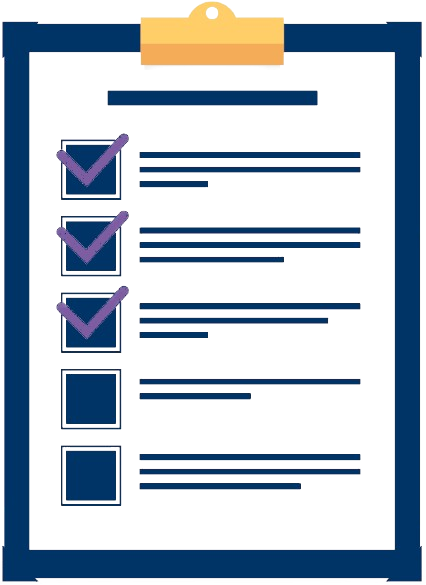Suggestions based on the Question and Answer that you are currently viewing
In light of the full disclosure principle, investors and creditors need to know the balances for assets, liabilities, and equity as well as the accounting policies adopted by management to measure the items reported in the balance sheet. Instructions If your school has a subscription to the FASB Codification, go to http://aaahq.org/asclogin.cfm to log in and prepare responses to the following. Provide Codification references for your responses. (a) Identify the literature that addresses the disclosure of accounting policies. (b) How are accounting policies defined in the literature? (c) What are the three scenarios that would result in detailed disclosure of the accounting methods used? (d) What are some examples of common disclosures that are required under this statement?
: Explain the organizational dimensions that managers use to execute strategy.
Under what circumstances would a rise in potential real income not result in a fall in the NAIRU?
What conditions must exist for the retail inventory method to provide valid results?
Franklin, Jefferson, and Washington formed the Independence Partnership (a calendar-year-end entity) by contributing cash 10 years ago. Each partner owns an equal interest in the partnership and has an outside basis in their partnership interest of $104,000. On January 1 of the current year, Franklin sells their partnership interest to Adams for a cash payment of $122,000. The partnership has the following assets and no liabilities as of the sale date: Tax Basis Fair Market Value Cash $ 18,000 $ 18,000 Accounts receivable -0- 12,000 Inventory 69,000 81,000 Equipment 180,000 225,000 Stock investment 45,000 30,000 Totals $ 312,000 $ 366,000 The equipment was purchased for $240,000, and the partnership has taken $60,000 of depreciation. The stock was purchased seven years ago. a. What is Franklin’s overall gain or loss on the sale of their partnership interest? b. What is the character of Franklin’s gain or loss?
Laura Davis is a member in a limited liability company that has historically been profitable but is expecting to generate losses in the near future because of a weak local economy. In addition to the hours she works as an employee of a local business, she currently spends approximately 150 hours per year helping to manage the LLC. Other LLC members each work approximately 175 hours per year each in the LLC, and the time Laura and other members spend managing the LLC has remained constant since she joined the company three years ago. Laura’s tax basis and amount at-risk are large compared to her share of projected losses; however, she is concerned that her ability to deduct her share of the projected losses will be limited by the passive activity loss rules. a. As an LLC member, will Laura’s share of losses be presumed to be passive as they are for limited partners? Why or why not? [Hint: See §469(h)(2); Garnett v. Comm’r, 132 TC 368 (2009); and Prop. Reg. § 1.469-5(e)(3)(i).] b. Assuming Laura’s losses are not presumed to be passive, is she devoting sufficient time to the LLC to be considered a material participant? Why or why not? c. What would you recommend to Laura to help her achieve a more favorable tax outcome?
What kinds of deductions are prohibited as a matter of public policy? Why might Congress deem it important to disallow deductions for expenditures that are against public policy?
Explain how EVA differs from residual income.
There are 10 correct answers in the following multiple choice questions (some questions have multiple answers that are correct). To attain a perfect score on the quiz, all correct answers must be given. Each correct answer is worth 1 point. Each omitted answer or wrong answer reduces the score by 1 point, and each additional answer beyond the correct number of answers reduces the score by 1 point. Percentage score on the quiz is based on the total number of correct answers. 12.1 Which one of the following terms refers to the glassy state of a material: (a) crystalline, (b) devitrified, (c) polycrystalline, (d) vitiated, or (e) vitreous? 12.2 Besides helping to preserve the environment, the use of recycled glass as an ingredient of the starting material in glassmaking serves what other useful purpose (one answer): (a) adds coloring variations to the glass for aesthetic value, (b) makes the glass easier to melt, (c) makes the glass stronger, or (d) reduces odors in the plant 12.3 The charge in glassworking is which one of the following: (a) the duration of the melting cycle, (b) the electric energy required to melt the glass, (c) the name given to the melting furnace, or (d) the starting materials in melting? 12.4 Typical glass melting temperatures are in which of the following ranges: (a) 400°C to 500°C, (b) 900°C to 1000°C, (c) 1500°C to 1600°C, or (d) 2000°C to 2200°C? 12.5 Casting is a glassworking process used for (a) high production, (b) low production, or (c) medium production? 12.6 Which one of the following processes or processing steps is not applicable in glassworking: (a) annealing, (b) pressing, (c) quenching, (d) sintering, and (e) spinning? 12.7 The press-and-blow process is best suited to the production of (narrow-necked) beverage bottles, while the blow-and-blow process is more appropriate for producing (wide-mouthed) jars: (a) true, or (b) false 12.8 Which one of the following processes is used to produce glass tubing: (a) Danner process, (b) pressing, (c) rolling, or (d) spinning? 12.9 If a glass part with a wall thickness of 5 mm (0.20 in) takes 10 minutes to anneal, how much time would a glass part of similar geometry but with a wall thickness of 7.5 mm (0.30 in) take to anneal (choose the one closest answer): (a) 10 minutes, (b) 15 minutes, (c) 20 minutes, or (c) 30 minutes? 12.10 A lehr is which of the following: (a) a lion's den, (b) a melting furnace, (c) a sintering furnace, (d) an annealing furnace, or (e) none of the above?
: Identify specific benefits and limitations of planning.
1. Have you heard of Casper, purchased a Casper mattress, or visited a Casper store? What is your impression? What do you value most and what do you want to avoid when buying a mattress?
By referring to each of the above determinants of supply, identify what would cause (a) the supply of potatoes to fall and (b) the supply of leather to rise.
Describe stock index futures. How could they be used by a financial institution that is anticipating a jump in stock prices but does not yet have sufficient funds to purchase large amounts of stock? Explain why stock index futures may reflect investor expectations about the market more quickly than stock prices. (LO3)
What determines the shape and position of the MP curve?
Explain the problems that arise in valuing mortgage-backed securities. (LO4)
For each of the unrelated transactions described below, present the entry(ies) required to record each transaction. 1. Grand Corp. issued $20,000,000 par value 10% convertible bonds at 99. If the bonds had not been convertible, the company’s investment banker estimates they would have been sold at 95. Expenses of issuing the bonds were $70,000. 2. Hoosier Company issued $20,000,000 par value 10% bonds at 98. One detachable stock purchase warrant was issued with each $100 par value bond. At the time of issuance, the warrants were selling for $4. 3. Suppose Sepracor, Inc. called its convertible debt in 2014. Assume the following related to the transaction. The 11%, $10,000,000 par value bonds were converted into 1,000,000 shares of $1 par value common stock on July 1, 2014. On July 1, there was $55,000 of unamortized discount applicable to the bonds, and the company paid an additional $75,000 to the bondholders to induce conversion of all the bonds. The company records the conversion using the book value method.
What cost concepts are there other than those based on opportunity cost? Would the use of these concepts be likely to lead to an output greater or less than the profit-maximising one?
Besides the starting material, what other feature distinguishes the rapid prototyping technologies?
Phil owns a ranch business and uses four-wheelers to do much of his work. Occasionally, though, he and his boys will go for a ride together as a family activity. During year 1, Phil put 765 miles on the four-wheeler that he bought on January 15 for $6,500. Of the miles driven, only 175 miles were for personal use. Assume four-wheelers qualify to be depreciated according to the five-year MACRS schedule and the four-wheeler was the only asset Phil purchased this year. a. Calculate the allowable depreciation for year 1 (ignore the §179 expense and bonus depreciation). b. Calculate the allowable depreciation for year 2 if total miles were 930 and personal-use miles were 400 (ignore the §179 expense and bonus depreciation).
Adam Fleeman, a skilled carpenter, started a home improvement business with Tom Collins, a master plumber. Adam and Tom are concerned about the payroll taxes they will have to pay. Assume they form an S corporation, and each earns a salary of $80,000 from the corporation; in addition, they expect their share of business profits to be $60,000 each. How much Social Security tax and Medicare tax (or self-employment tax) will Adam, Tom, and their corporation have to pay on their salary and profits?
Does this mean, therefore, that there were no positive incentive effects from the 1979–97 Conservative government’s tax measures?
Assume that the expected inflation rate has just been revised upward by the market. Would that change affect the return required by investors who invest in the stocks? Explain. (LO3)
1. : This chapter suggested that structure should be designed to fit strategy. Some theorists argue that strategy should be designed to fit the organization’s structure. With which theory do you agree? Explain.
Why is it the case that a – b = e – f, and c – d = g – h?
The benefits of buying with AnswerDone:

Access to High-Quality Documents
Our platform features a wide range of meticulously curated documents, from solved assignments and research papers to detailed study guides. Each document is reviewed to ensure it meets our high standards, giving you access to reliable and high-quality resources.

Easy and Secure Transactions
We prioritize your security. Our platform uses advanced encryption technology to protect your personal and financial information. Buying with AnswerDone means you can make transactions with confidence, knowing that your data is secure

Instant Access
Once you make a purchase, you’ll have immediate access to your documents. No waiting periods or delays—just instant delivery of the resources you need to succeed.
